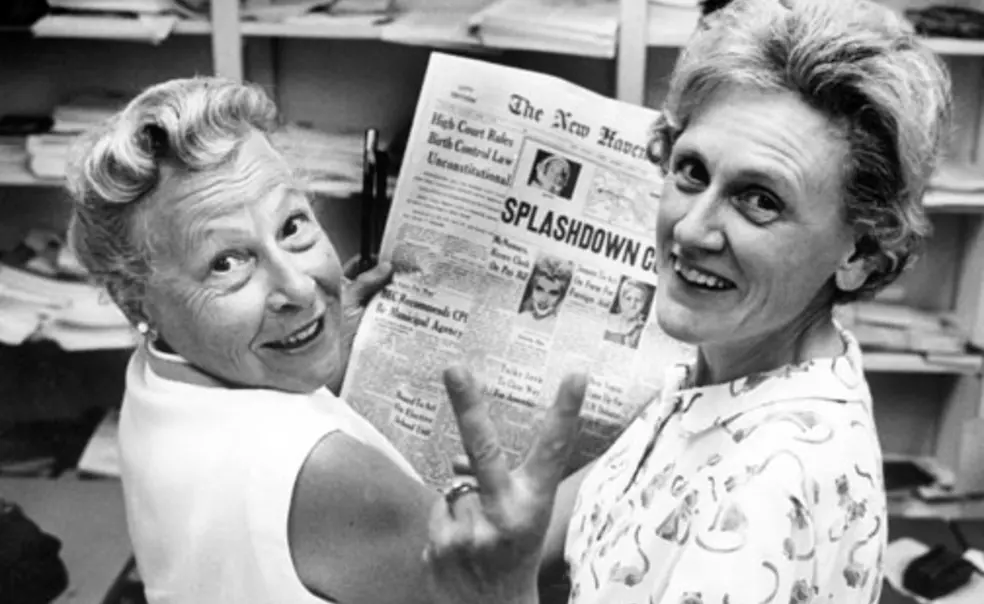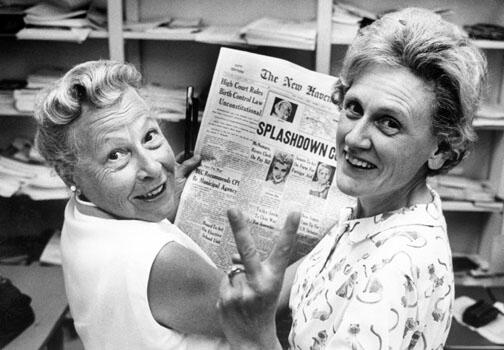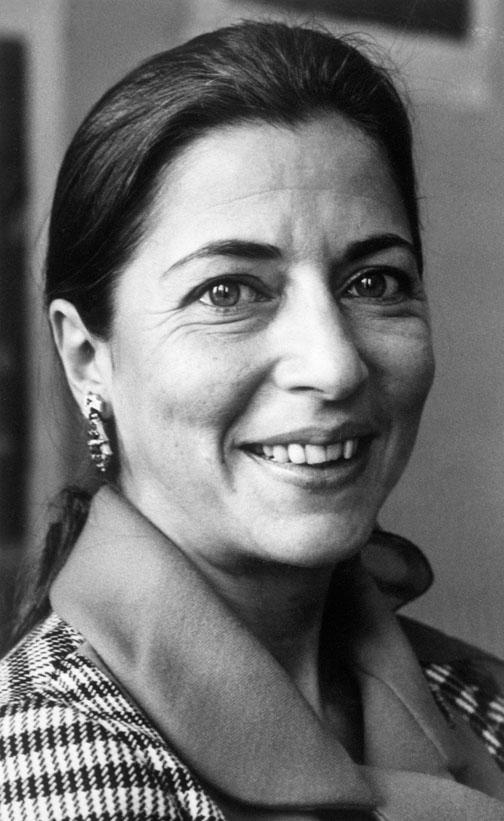New trove of ACLU papers opens at Mudd Library
A few years ago, University archivist Dan Linke was leading an undergraduate history seminar through Princeton’s collection of papers of the American Civil Liberties Union, housed in Mudd Library. After showing the students documents relating to Brown v. Board of Education, Linke shifted gears and pulled out a folder labeled Gideon v. Cochran, the early stage of the case that would become Gideon v. Wainwright and establish a defendant’s right to an attorney even if he could not afford one.
Near the top was a two-page letter, printed in soft pencil on lined prison stationery. Postmarked July 3, 1962, and sent from “State Prison Raiford, Florida” to Mel Wulf in the ACLU’s national office in Manhattan, it was signed “Clarence Gideon”: “Being refused a attorney was just one of the factors involved there is several more of them,” he wrote to Wulf.
The prison stamped “censored” in blue ink over Gideon’s crude printing; the entire reverse side is covered with the rules governing prisoners’ mail. The letter is full of misspellings and bad punctuation, but it is impossible to hold it in your hand and not feel deeply moved.
Scholars and others now are able to search for more recent treasures in the archives, as most of the ACLU papers covering the volatile years 1970 through 2000 were opened to the public July 1. Archivist Adriane Hanson, who has spent the last two years processing the archive, says people have been calling her since the early spring, “chomping at the bit, asking, ‘Is it ready yet?’”
Since the early 1950s, when the ACLU began shipping its papers to Princeton, the archive has grown steadily, to become the largest of Mudd’s 263 public-policy collections, by far. “In most places, a couple of hundred feet is a big collection,” notes Hanson. “We’re up to 4,200 linear feet, so it’s huge.”
It’s also Mudd’s most popular collection, and no wonder: From its founding in 1920, the ACLU has been involved in every major civil-liberties battle in the nation. Says legal historian Laura Weinrib *11, who teaches at the University of Chicago Law School, “So many of the most divisive and important controversies of the 20th century — desegregation, reproductive rights, capital punishment, terrorism, you name it — [the ACLU was] at the heart of it, not always on what we would today think of as the right side. Usually, though, they were vindicated.”
Weinrib began using the collection to write about efforts to extend constitutional protections to disenfranchised groups — and wound up writing about how the ACLU itself grew out of the radical labor movement. “That was entirely because of what I found in the archives,” she says. “I had no idea that would be there.”
Indeed, one of the perils of working in the archives is how easy it is to get caught up in the gut-wrenching stories revealed in all those interoffice memos, dockets, telegrams, newspaper clippings, and amicus briefs — all those voices pleading for recognition and justice. Browsers, beware.
Next to a folder on the “shotgun squads” organized by the Dallas police in 1964 — in which armed police awaited robbers in convenience stores — is a folder containing the correspondence between Greg Olds, director of the ACLU’s Dallas office, and Marina Oswald, dating from January 1964. Olds was concerned that the Secret Service was holding Lee Harvey Oswald’s widow on the pretext of protecting her. Her reply, in Russian, on neat stationery with an embossed tree at the top, assures Olds that she is free to move about as she wishes: “My isolation from the world is explained only by my own feelings,” she writes. “After what happened, I have no desire to see anyone, particularly if it reminds me of what happened.”
Not everything in the collection concerns such momentous convulsions of history. A folder labeled “Crackpottery” contains letters between Wulf and a Mr. Buck Nelson of Mountain View, Mo. Nelson was appealing to the ACLU after a county welfare officer threatened to cut off his monthly check for $55 unless he submitted to a sanity hearing. “She was very mean and ornery to me,” he informed Wulf. “What I had to take from her was a shame.” Then again, maybe she had a point: Nelson had been telling everyone he’d taken “a trip to Mars, both sides of the moon, and to Venus in a UFO.”
Though the ACLU had many celebrity clients — Muhammad Ali, Dr. Benjamin Spock, and Ezra Pound, to name a few — riveting stories most often come from the obscure. Rebecca Kluchin, a history professor at Sacramento State University specializing in women and health care, found in the archives the dockets of 21 cases of forced sterilization. The cases involved women like Valerie Cliett, a 23-year-old from Philadelphia who in 1973 was sterilized without her consent by the University of Pennsylvania Hospital. Why? “Poor and black, pretty much,” says Kluchin, whose book Fit to be Tied: Sterilization and Reproductive Rights in America, 1960–1984 was published last year. “It speaks to the attitudes of the times. It fits with the backlash against welfare, the rise of the new right, and the continuation of racial prejudice in a post-Brown v. Board world.”
Kluchin planned to return to the archive to view the newly released papers. Her next book will deal with fetal rights — “how it is that a woman and her fetus come to be viewed as separate entities,” she explains.
The new trove of materials covers a critical period. Following hard on the ’60s and the fragmentation produced by the Vietnam War, the civil-rights and women’s movements, and Watergate, the years 1970 through 2000 were a period when rights were being extended to many groups. “You had a deepening and consolidation of the civil-rights movement in the early part of the 1970s,” says Anthony Romero ’87, the ACLU’s executive director since 2001. “Then, through the ’70s and into the ’80s, you had the beginning of the backlash, the Reagan years, and the way things that had been fought for and won were scrutinized again. So you had a moment of enormous progress and enormous flux.”
The papers just unveiled detail the role the ACLU is playing in our politics today. “They are important because the work of the ACLU is central to what we call the ‘culture wars,’ which emerged in the late ’70s,” says Samuel Walker, who wrote In Defense of American Liberties: A History of the ACLU. “The new right has made those their issues and has dominated American politics. To have access to the papers of the organization that challenged them over the years is extremely important.”
One towering figure to emerge from the ACLU in the early 1970s was Ruth Bader Ginsburg, now on the Supreme Court. After graduating at the top of her class at Columbia Law School but struggling to find work, Ginsburg finally had begun teaching at Rutgers. Her specialty was civil procedure, but some of her students volunteering at the ACLU office in Newark got her interested in a case involving women’s rights. It did not take Ginsburg long to realize she’d found a new specialty: She became the co-founder and first head of the ACLU’s Women’s Rights Project (1971) and wrote the ACLU’s brief in Reed v. Reed, a 1971 case in which a woman was fighting an Idaho law that made her husband the executor of their son’s estate simply because he was a man.
Jane DeHart, a former history professor at the University of California, Santa Barbara, first visited Princeton’s ACLU archive in 1998, while working on a book about the battle to ratify the Equal Rights Amendment. She had no idea it would lead to a 14-year project on Ginsburg. “It was Mudd that got me started on this,” says DeHart, who hopes to finish Ruth Bader Ginsburg: Pursuing Equality this year.
Privacy became an increasingly important concern during the 1970–2000 period. Leigh Ann Wheeler, a professor of history at SUNY–Binghamton who did research in Mudd’s archives for her upcoming book How Sex Became a Civil Liberty, points out that the ACLU first was interested in sexual matters as a free-speech issue, regarding access to sex-education materials. The notion that privacy might be a general right began to form later, in the organization’s work with nudists. “The ACLU files on nudism are unbelievably thick,” says Wheeler. It wasn’t until the ’50s that the ACLU deliberately began to frame a right to privacy, which culminated in Griswold v. Connecticut, a 1965 case regarding access to birth control.
Wheeler says she would have loved to have gotten her hands on the new materials. Still, no one is more excited for them to be open to the public than Romero. If the ACLU is to serve the public interest, he says, “our work has to have the transparency we require of public officials. What’s critical is that they be open to the public for an unvarnished review, the good and the bad.”














1 Response
Stephen L. Pevar ’68
9 Years AgoMudd Library’s ACLU papers
I’ve been an ACLU national staff attorney for 35 years. During that time I’ve litigated more than 150 cases around the country on a wide range of civil-liberties issues, including free speech, prisoners’ rights, and ballot access. It’s been an incredible experience and a dream come true. At least 75 of my litigation files were sent to Princeton as part of its collection of ACLU papers in Mudd Library (Campus Notebook, July 11). In the front of each litigation file, I wrote several paragraphs explaining what the case was about and its significance. If anyone should examine them and have any questions, I’d be delighted to respond!